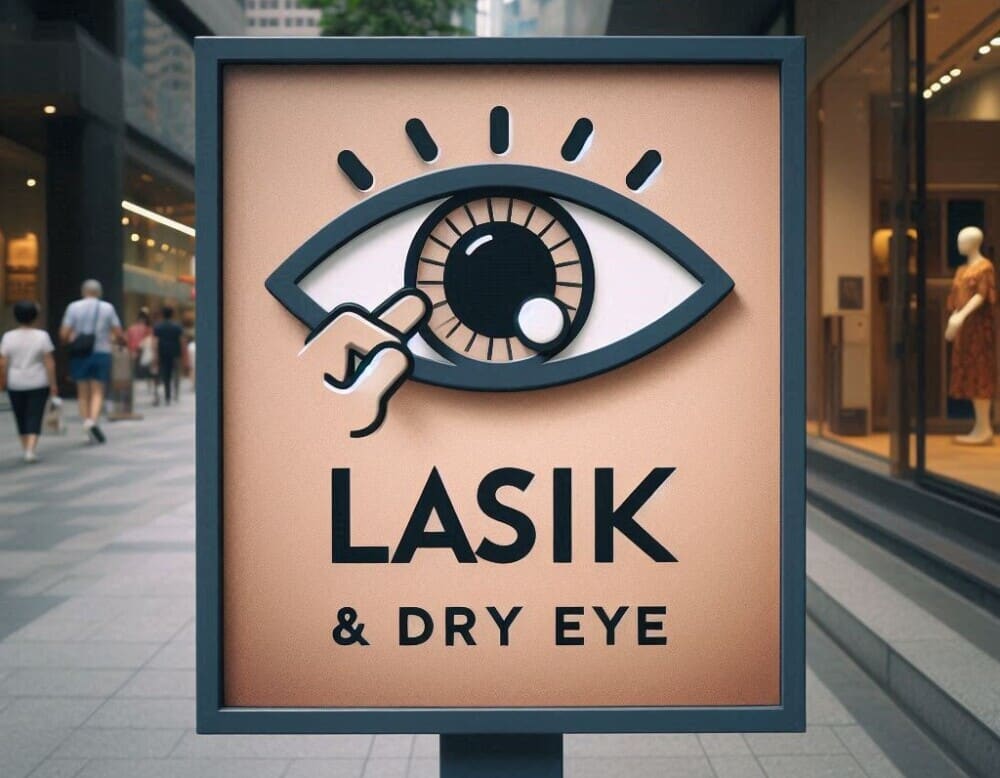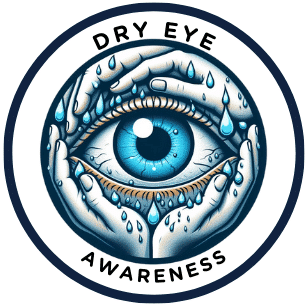
Dry Eye Syndrome, occasionally abbreviated as DES, is a condition I describe to my patients as more than an occasional nuisance; it’s a chronic and sometimes debilitating issue. It’s characterized by a lack of sufficient lubrication and moisture on the eye’s surface.
The causes vary, ranging from environmental factors, such as staring at a computer screen for long hours, to systemic health issues. Ageing, certain medications, and medical conditions like Sjogren’s syndrome, rheumatoid arthritis, and thyroid disorders are known triggers.
People with this condition often report a gritty sensation, as if sand were in their eyes, along with redness, fatigue, and blurred vision. These symptoms can lead to a significant decrease in their quality of life, as even simple tasks like reading or driving can become challenging.
Diagnosing Dry Eye Syndrome involves a thorough eye examination. Your eye care professional may measure the volume and quality of your tears and examine the health of your eye’s surface. Treatments often include over-the-counter eye drops, prescription medications to increase tear production, or procedures to conserve tears.
Yet, as dry eyes have taken the spotlight in eye health discussions, I find many of my patients are more curious about how certain elective eye procedures, particularly LASIK surgery, factor into the condition. LASIK, known for its quick vision correction, does not come without its setbacks, especially when considering the impact on dry eye symptoms.
How LASIK Surgery Can Affect Your Eyes: Dry Eye Risks
LASIK eye surgery is a widely sought-after procedure for its promise of improved vision without the need for glasses or contact lenses. But with any surgery, there are potential side effects, and for LASIK, one notable concern is the risk of developing or exacerbating dry eye symptoms.
Dry eye as a post-operative complication isn’t rare. Several mechanisms contribute to this condition following the surgery. The corneal nerves responsible for tear production can be temporarily affected during the procedure. As these nerves heal, some patients may experience reduced tear production, leading to dry eye sensations.
Research provides insight into this issue. Studies indicate a significant number of patients report dry eye symptoms several months after the operation. Although for most, this is transient, a subset of individuals may develop persistent symptoms that require ongoing management.
It’s worth noting the interplay between dry eyes and LASIK doesn’t render the procedure off-limits. Before making any decision, a thorough evaluation by an eye care professional is essential. In my next section, I’ll discuss how you can manage dry eyes and still consider LASIK as a viable option.
Managing Dry Eyes Before and After LASIK
When you’re pondering the idea of LASIK surgery, understanding the management of dry eyes is crucial. It’s essential to be proactive about the care of your eyes both before and after the procedure to ensure the best possible outcome.
Before you even set a date for your LASIK surgery, an in-depth pre-operative evaluation is vital. This includes assessing the health of your tear film and the likelihood of dry eye development post-surgery. If you already have mild symptoms, this is the time to address them aggressively.
I can’t stress enough the importance of following your eye doctor’s advice to mitigate the risk of dry eyes before the operation. This might include using preservative-free eye drops, making dietary changes to include more omega-3 fatty acids, or starting punctal plugs to retain moisture. It also might include a short course of treatment with cyclosporine eye drops such as Xiidra prior to surgery.
Post-LASIK care is just as important. Immediately after surgery, you’ll likely need artificial tears to keep your eyes lubricated. Stick to your doctor’s schedule for follow-up appointments to catch any symptoms of dry eyes early.
The long-term outlook for those who experience dry eyes after LASIK is typically positive. With consistent management and collaboration with your eye care professional, most people find their symptoms lessen over time, and the improved vision becomes well worth the temporary discomfort.
Is LASIK Right for You? Considering Dry Eye Syndrome
Choosing to undergo LASIK surgery is a significant decision that warrants careful consideration, especially if you’re someone who battles with Dry Eye Syndrome. It’s important to weigh the benefits of potentially saying goodbye to glasses and contact lenses against the risk of aggravating dry eye symptoms.
Engaging in a detailed discussion with your ophthalmologist is crucial. Their expertise is invaluable in helping you understand your unique situation. A thorough eye examination, coupled with your medical history, can reveal the nuances of how LASIK might affect you and if your dry eyes pose a significant concern.
For individuals with mild to moderate dry eye symptoms, LASIK could still be a viable option. Your eye surgeon might recommend specific treatments to manage dry eyes before and after surgery, ensuring the best possible outcome.
Conversely, if you’re dealing with severe Dry Eye Syndrome, it may be worth exploring other vision correction procedures. Advances in technology have introduced alternatives such as PRK (Photorefractive Keratectomy) or phakic IOLs (intraocular lenses), which might be more appropriate for your condition.
Real-life stories of people who’ve faced similar decisions can be illuminating. Whether it’s a story of someone who experienced relief from dry eyes post-LASIK or someone who opted for a different path, these narratives can provide comfort and insight as you make your own choice.
Remember, the goal is not just improved vision, but maintaining the overall health and comfort of your eyes for the long term. Your decision should align with this broader objective, ensuring that you continue to enjoy life to its fullest, with clear vision you can rely on.
